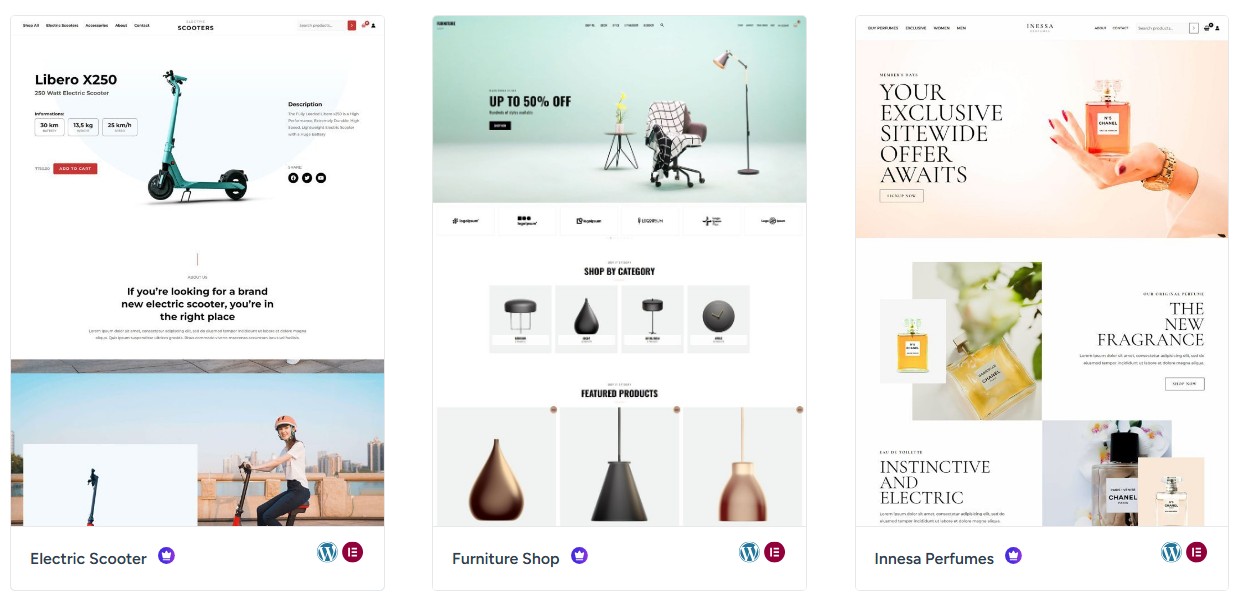Shopify e-Commerce Trends To Watch Out for in 2026
Written and edited by: Jay

Hey there! Jay Myers here, co-founder of Bold Match. I’ve been in the Shopify ecosystem since before it was cool (2012, to be exact), and every year around this time, my inbox fills up with merchants asking the same question: “What should I be preparing for next year?” Now. I could give you the standard trends article filled with AI buzzwords. But that’s not why you’re here is it?.
I’m not going to tell you the metaverse is finally happening or that AI will replace your entire team. I’ve learned to separate signal from noise. The truth about 2026? Too many merchants are preparing for the wrong things. They’re worried about chatbots and AI Overviews strangling traffic to the NYTs (but not to product landing pages) while their conversion rates tank. They’re chasing TikTok virality while FBA eats their lunch. Now. Based on Shopify’s latest commerce trends data and what we’re seeing across the ecosystem, here’s what I think will matter in 2026.
Get Ready for the End of the Template Store Era
Yes. You did read that headline correctly. According to Baymard Institute’s 2024 research, 18% of online shoppers are abandoning orders because they “didn’t trust the site” with their credit card information. The tolerance for cookie-cutter online stores is evaporating. What’s driving this? Consumer sophistication. Adobe’s 2024 Digital Trends Report found that consumers now visit an average of 4.2 sites before making a purchase decision, up from 2.8 in 2020. And they’re comparison shopping not just on price, but on expertise, on authenticity, and on brand differentiation. The way that many consumers are being acclimated to shop by social commerce.
So 2026’s most successful Shopify merchants probably won’t be generalists. They’ll be category experts applying the lessons they’ve learned courting customers on Pinterest Shopping, TikTok Shop or WhatsApp Business to owning specific problems for specific customers generally. Not so much finding micro-niches as executing depth over breadth strategies. Like what happened with outdoor gear. Ten years ago, you could sell camping equipment broadly. Today? Brands like Zpacks dominate ultralight backpacking with obsessive focus, while Yeti owns premium coolers through engineering excellence. The generalist REI wannabes are struggling or pivoting.
If you’re already established but fighting on multiple fronts, that means it’s probably time for hard choices. Take a long look at your actual data. Find out. Which customer segments are actually driving your profits and growth, and which of your product lines have defensible differentiations?
Then cut everything else.
Your Best Competitive Moat Will Be First-Party Data
The cookie is dead. iOS tracking isn’t pining for the fjords. It is an ex parrot. And the numbers are stark to justify using a joke from 1969 (yes ‘69) to accurately characterize them. According to AppsFlyer’s 2024 benchmarks iOS 14.5+ opt-in rates hover around 25%. Third-party cookie deprecation is finally happening in Chrome by Q3 2025. Customer acquisition costs have increased by 222% since 2013, with online merchants losing $29 for every new consumer acquisition compared to only $9 back in 2013 based on SimplicityDX’s latest ecommerce report.
In other words. The only sustainable path forward is owning your customer relationships directly.
This means your email list and SMS subscribers aren’t just marketing targets. They’re business assets. According to Omnisend’s 2024 e-commerce statistics, merchants with robust first-party data strategies see 3.1X higher customer LTV than those depending on paid acquisition. But it’s not about collecting more data. Don’t forget. McKinsey’s 2024 personalization report showed us that by only using THREE data points, but using them effectively, (purchase history, browsing behavior, and stated preference) outperforms complex 20 variable models in driving conversion.
The key will be deftly applying what you’re probably learning today peddling via shoppable content to your content strategy generally. Successful implementations will include progressive profiling through post-purchase surveys (typically 65% completion rates), exclusive early access programs tied to data sharing and personalized product recommendations consumers can trust.
Moving Beyond the Going Hype Around AI
Let’s be clear here. AI isn’t going to replace you. But merchants using AI will absolutely replace merchants who aren’t. Soon. AI won’t be about chatbots pretending to be human (though those will get better). It’ll be about augmenting every aspect of your operation. Inventory forecasting that actually works. Product descriptions that convert. Customer service that scales without losing the human touch. Pricing optimization that can respond to market conditions in real-time.
Shopify’s 2024 Future of Commerce report argued that online retailers using AI-powered tools had seen average efficiency gains of around 26%. But that headline obscures the fact that most “AI” implementations are being tasked to solve the wrong problems. Don’t get me wrong here. There are AI tools doing inventory forecasting that can reduce stockouts by 35%. And dynamic pricing optimization that can improve margins by 8-12% (based on Competera’s 2024 pricing study). And others for customer service automation that handles 60% of inquiries without human assistance, per Zendesk’s Trends. Those things just aren’t the things AI’s mostly being used for.
What’s not working? Generic chatbots, AI-generated product descriptions without human review, and anything that removes the recognizably human elements that really do differentiate brands.
Shopify has deployed AI throughout its ecosystem in the form of Shopify Magic and Sidekick. So start there before chasing third-party solutions. These native tools are improving rapidly and integrate seamlessly with your existing workflows. The retailers who’re successfully using AI are treating it as a great tool, not a strategic differentiator. Your competitive advantage isn’t using AI. Everyone will be doing that. It’ll be using AI to execute your unique value proposition effectively.
Supply Chain Flexibility Will Become A Competitive Advantage
The days of simple dropshipping or holding everything in one warehouse are over. Winning merchants in 2026 will have hybrid fulfillment strategies that balance cost, speed, and reliability
FBA has set consumer expectations. Two-day shipping is table stakes, same-day is increasingly expected in major metros. According to Pitney Bowes’ 2024 Global Ecommerce Study, 76% of consumers abandon carts due to unsatisfactory delivery options. The response isn’t competing with Amazon’s infrastructure. It’s hybrid fulfillment strategies balancing speed, cost and reliability.
Based on ShipBob’s 2024 State of Fulfillment report, the most successful online merchants are going with distributed inventory across 2-3 strategic locations, reducing their average shipping times by 48% and their costs by 23%. They’re also combining owned inventory for best-sellers, dropshipping for their long-tail product lines, and on-demand production for customizable items.
The key is segmentation. Your top 20% of SKUs that drive 80% of revenue need different fulfillment strategies than experimental products or seasonal items. Shopify’s multi-location inventory and Fulfillment Network make this increasingly manageable without enterprise-level complexity.
The Continued Rise of Shopping as Entertainment
Commerce and content are merging. So. The most successful e-commerce merchants in 2026 won’t just sell products; they’ll create experiences worth watching, sharing, and participating in.
Live shopping, interactive demos, behind-the-scenes content, and community experiences will become standard parts of the commerce playbook. This isn’t about becoming an influencer. It’s about recognizing that modern consumers want to be entertained and educated, not just sold to.
TikTok drove $4.3 billion in direct commerce sales in the US in 2024, according to eMarketer. YouTube Shopping grew 156% year-over-year per Alphabet’s latest earnings. The line between content and commerce has effectively disappeared. But here’s what the headlines miss: it’s not about viral moments. Wharton’s 2024 analysis of Social Commerce revealed that consistent, value-driven messaging outperforms viral attempts by 4X in driving sustainable revenue growth.
In other words … “Entertainment” doesn’t mean silly; it means effectively engaging. And the winning formula won’t be production value. It’ll be authentic expertise delivered consistently. Like. According to HubSpot’s 2024 State of Marketing, 82% of consumers want brands to share knowledge, not just promote products. So technical implementation will matter less than your strategic commitment. Whether it’s TikTok Shop, YouTube Shopping, or Instagram Shopping, the marketplaces are just distribution channels. The differentiation is expertise and consistency.
Why 2026 Will Be Different for Shopify Merchants
2026 probably won’t be any more about revolutionary changes than 2025 was. It’ll be about professional execution of proven strategies. The gap between successful and flailing retailers will widen dramatically. The merchants who thrive will be those who see these trends not as tactical checkboxes but as fundamental shifts in how commerce works. They’ll build real expertise, own their customer relationships, and use technology to amplify rather than replace their unique value. Success won’t come from implementing every trend. It’ll come from choosing the ones that align with your business model and executing them better than your competition.
Remember: behind every successful implementation is deep expertise in both strategy and execution. Whether you build that expertise internally or partner with specialists who’ve done this before, the key is to start now. The merchants who win in 2026 are making decisions today.
Well, I think that’s it for me today. So until next time Keep building something awesome! – JAY



